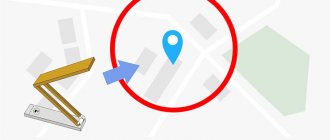Invest in web design that sells
We don't often think of web design as marketing packaging, but it does impact the amount of time and attention a user will spend exploring your product.
Your website is a sales funnel , so as long as it's clearly packaged, easy to read, and interesting, it doesn't matter how much time you spend on design—you'll still get a return on your investment. If you don't have the design skills to do it yourself, it's worth hiring someone to create a design that's modern, eye-catching, sells your company's benefits, and mobile responsive.
Example of 2 sites. In my opinion, it is obvious that the second option will attract more clients and leads to the business than the first:
Internet marketing and business plan for online business
The development of modern information technologies has significantly influenced the conduct of traditional business. The Internet has become not only a source of information, but also an area of new business.
There are a number of factors that determined the need to organize a business on the Internet:
- Organizing your own Internet presence. Many companies publish information about their activities on the Internet, for example, company news, contact information, etc. One of the main goals of creating a company's representative office on the Internet is to publish on the website complete and detailed information about the company, its products and services, which is cost-effective compared to the costs of traditional media.
- Customer service. Using the website, the company serves its customers in a timely manner and promptly responds to their requests. This allows you to solve one of the main problems of marketing.
- Public relations. Any Internet user can obtain the necessary information about the desired company by visiting its website. In addition, the user can read the company’s press releases published on various Internet resources, and can become its potential client both during and after visiting the site. Thus, the website is one of the effective marketing tools.
- News. Thanks to the Internet, any user can receive the necessary information in a timely manner. Moreover, access to this information can be either free or paid. An event that occurred at some point on the globe can become known to the whole world in a matter of seconds.
- Sales of goods. This is one of the main benefits of companies using internet marketing. In this case, the user usually gets acquainted with the activities of the company before making purchases on the company’s website. A company can arrange to sell its products online by creating its own online store or through online sales agents.
- Publication of answers to frequently asked questions (FAQ - Frequently Asked Questions) . The company publishes on its website answers to frequently asked questions that interest consumers. For example, questions related to payment, delivery, warranty service, etc. Thanks to this, the company saves time and money on contacts with clients.
- Constant communication with sales agents. Using the Internet in their activities, sales agents can quickly and timely receive the necessary information about the product on the company’s website or by e-mail. The company can regularly send the required information to the sales agent's email address.
- Entering the international market. Thanks to Internet marketing, a company can attract new consumers to its products and services both at the “manufacturer - final consumer” level and at the “manufacturer - intermediary - final consumer” level. These new consumers may be located in different countries, which will further facilitate the use of traditional international marketing. Therefore, to successfully conduct business, a company needs to create a professional website for foreign clients and properly develop an Internet marketing plan, taking into account the specifics of international consumers. For example, issues of pricing and delivery of goods to foreign customers need to be considered.
- Local market. Maximum accessibility of the Internet to any resident of a certain geographic region will contribute to the development of the Internet market in this region. Any local restaurant, store, or bank can advertise their products and services on various Internet sites for that region. For example, a store in Minsk may open an online store and offer products to Minsk residents on the Internet.
- Sales of specialized goods (services). Using Internet marketing, you can sell products and services intended for a narrow target audience around the world. Due to this, sales volumes can be high even for specialized products.
- Entering the youth market. Thanks to the Internet, a company can enter the youth market and offer its products to the appropriate target audience. This is due to the fact that a significant proportion of the Internet audience is young people.
Marketing research, pricing, product policy, marketing communications and Internet marketing management are the components of Internet marketing.
As noted by V.V. Tsarev and A.A. Kantarovich, Internet marketing is a set of activities for researching the Internet market, for the effective promotion and sale of goods (services) using modern Internet technologies. In this case, the object of marketing research is the Internet market.
V.V. Tsarev and A.A. Kantarovich propose using Internet marketing to solve problems such as:
- — growth in sales of goods (services); involving new sales agents in the business;
- — increasing traffic to the Internet resource;
- — increase in the number of bank clients.
According to Elias M. Evod: “The essence of marketing on the Internet is to reach consumers, generate profits, improve technology and improve the core corporate process.”
It should be noted that Internet marketing is more business-oriented than technology-oriented.
Information about consumers and competitors contributes to successful online business. The more complete and detailed the necessary information is presented, the greater the chances of success.
A company needs to track and study its customers in order to offer them products and services that will be in demand. Therefore, to obtain such data, the company often resorts to the use of special software, which often raises ethical and legal problems.
It should be noted that if goods are distributed by mail, then the company needs to think about the possibility of using Internet marketing.
As a result of this, he can access the company’s website containing the required information.
The following methods of online marketing are available:
- Passive marketing : publishing information about the company on the Internet (Internet representation).
- Moderately passive marketing : a site indexed by many search engines and registered in various directories; - specialized service for users requesting information; - company information sent by e-mail to its former clients.
- Moderately active marketing: offline advertising; - advertising headlines.
- Aggressive marketing : - additional advertising windows (when visiting a site, other sites open at the same time); — mail with intrusive messages; - spam.
Registering a site in search engines and directories is one of the ways to attract visitors. Information about the personalized service that a site user requires is usually requested from him or her by email or on the site itself when registering. In this case, this type of Internet marketing is non-intrusive.
To attract visitors to the site, advertising for the target audience and registration in thematic catalogs are necessary.
A company's use of the email addresses of its former clients constitutes aggressive marketing. Former clients are no longer interested in receiving any information from the company. In this case, this method is an opportunity for the company to win back a former client by making him special offers.
The most aggressive method of marketing on the Internet is spam, i.e. sending users intrusive, unwanted emails. The term spam began to be used in 1993, when advertising companies began publishing unrelated messages or messages that were direct advertisements in Usenet news groups, discussion lists, and guest books.
The online marketing life cycle includes:
- — planning;
- — selection of goods (services);
- — pricing;
- — advertising;
- - spreading;
- — delivery;
- — individualization of clients.
Before using Internet marketing, you need to clearly know whether the Internet is needed to run this business. To do this, it is necessary to identify factors that can both favorably and negatively affect the company’s activities. To get the right answer, you need to weigh the pros and cons and carefully analyze certain factors.
The business plan depends on the activity and size of the company and usually consists of the following sections:
- Company goal.
- Products (services) offered by the company for sale and their uniqueness.
- Competitors. Analysis of competitors and their position in the market. Analysis of the activities of competitors' websites and their methods of doing business on the Internet.
- Potential clients who use the Internet.
- Marketing. A plan for finding potential clients and determining the appropriate amount of costs for these activities.
- Sales promotion methods.
- Organizing a business on the Internet. Drawing up a business plan for organizing an Internet business. Purchasing the necessary equipment, finding a location (office), choosing Internet service providers, software for creating a business on the Internet, etc.
To successfully run an Internet business, it is necessary to determine selection criteria and corresponding alternatives when choosing partner companies and purchasing various equipment, services, etc.
For example, when choosing Internet service providers, you can use criteria such as cost of services, reliability, quality, service. In this case, the alternatives are companies that provide these services. Products on the Internet include traditional “real” and electronic goods. For example, an online store sells a phone that can be delivered to the buyer by mail or courier.
The visitor can also purchase the necessary software from the online store and download it to his computer. Various paid services are offered on the Internet. For example, consulting, etc.
Online pricing depends on factors such as the business model, products and services offered, market, target audience, etc.
To attract the attention of potential consumers to products, companies use one of the components of Internet marketing - online advertising.
The user can place an order on the website using a special form, after which the order is automatically sent to the company. The company that receives the order carries out its implementation. This stage is part of the marketing process.
The final stage of the online marketing lifecycle is customization.
Individualization is a way of combining information about a product and its promotion on the market. Moreover, such information should be prepared in a form that meets the needs of consumers, including advertising and product selection.
In this endless avalanche of information, a person must separate truth from deception, which is usually impossible to do alone. It is quite easy to publish false information on the Internet. A visitor who comes to a resource with such information may become a victim of deception.
Before purchasing the necessary product on the Internet, the user must analyze its price, terms of sale, delivery and level of service in various online stores. Based on this, the user chooses an online store that offers the best conditions.
A modern company needs to use an Internet marketing strategy for the successful functioning of its website, which includes the following elements:
- Site structure. Ease of navigation, specific information and its consistency should be characteristic of the site.
- Website design and customization. The resource should attract the visitor and, whenever possible, offer personalized information and services.
- Trademark. The site must correspond to the company's trademark and be associated with it, its brand.
- Advertising. The company must advertise its website using Internet technologies and various traditional media.
- News. A company needs to constantly update its resource by publishing information about a new product, service, etc.
- Sales promotion methods. A company may offer various discounts to customers who purchase its products through an online store. In addition, the company can conduct promotions on its website. For example, offering discounts to visitors when purchasing products who participated in an individual survey on its website.
The Internet has become a new channel of information for the buyer and has made him independent of the seller. Previously, the seller controlled the information provided to the buyer about the product.
Marketing requires that the investment pays off. The use of special software allows you to analyze and predict the actions of visitors. It is required to study in detail the statistics obtained about visitor requests.
With the help of Internet marketing, a company can quickly respond to current changes in the market.
Customer experience plays an important role in e-commerce. Therefore, the company must promptly respond to requests from site visitors, their complaints and promptly resolve unexpected problem situations with customers. The degree of customer satisfaction will characterize the company's activities. Speed of response to consumer requests will contribute to successful e-commerce.
Maximum access to the Internet and the minimum cost of using this channel will contribute to the development of e-commerce, and consequently, Internet marketing.
To this day, some countries have not yet adopted laws regulating online business procedures, which allows dishonest sellers to deceive buyers.
Any company that implements marketing in its activities strives to most fully satisfy the needs of existing and potential consumers for the necessary goods and services.
A targeted study of a current problem and the development on this basis of recommendations to ensure its best solution is marketing research.
The main directions of traditional marketing research are:
- - market research;
- — customer research;
- — competitor research;
- — proposal research;
- — product research;
- — price research;
- — research into the effectiveness of product promotion policies, etc.
Marketing research on the Internet is characterized by directions similar to traditional marketing research.
In addition, the company can learn from the experience of its competitors. Thus, by conducting competitor research online, a company can identify the best competitors
and adopt their experience and successful business strategies. In this case, the company will engage in benchmarking on the Internet.
Today, when Internet technologies are rapidly developing and being widely introduced into all spheres of human life, the number of companies in the CIS countries using Internet marketing is constantly growing. The lack of necessary knowledge and experience in this area leads many companies to numerous mistakes when implementing Internet marketing. Undoubtedly, Internet marketing costs will increase with the development of Internet technologies and the speed of their penetration into various areas of life. Therefore, the main problem that the company will face will be related to the effectiveness of the implementation of these technologies and their evaluation.
Use search engine marketing and optimization
Search engine marketing and SEO optimization are part of what helps your business appear higher in the search results list. With a strong SEO strategy, your company's website will show up for the keywords used by customers to find your services.
This increases your chances of becoming a brand that a person will work with after searching on the Internet, since once he finds a good site, the client will save it in his bookmarks and will return to you again and again.
Financial side of the issue
Regarding the money required to develop an online business, it is worth saying that it all depends on the goals, idea, and initial capital. Of course, everything can be done with minimal investment, but you will have to wait a very long time. Therefore, serious online companies spend a lot of money on promoting their portals. What exactly is included in the “estimate”?
Initial Investment
Like any business, you need to invest in an online project at the initial stage. What is included in the costs:
- Buying a domain and hosting – about 2,000 rubles/year;
- Website creation – minimum 10,000 rubles. If the development is carried out by a professional studio, the amount can increase to 100,000 rubles;
- Filling the site with information costs about 10,000 rubles. for the services of a copywriter and content manager;
- Purchasing a product (if it is a store) - the cost depends on many factors;
- Renting a warehouse for storing products – from 15,000 rubles per month (for Moscow);
- Other expenses include office rent, staff salaries, equipment purchase, advertising, etc.
Important! This is an approximate amount that needs to be invested at the initial stage. It all depends on the type of your business, goals and plans, scale of the enterprise, etc.
Advertising and website promotion
Example of a cost chart:
| For what | How many | Details |
| Editorial | 150 thousand rubles/month. | Salaries for hired editors, including taxes, and additional expenses |
| Active development of the site (first six months) | 40 thousand rubles/month. | Website promotion in search engines, social networks, etc. |
| Promotion after the site is six months old | 15 thousand rubles/month. | |
| Project technical support | 14 thousand rubles/month. | Hosting, working with content, modifications, settings, etc. |
| Organizational and management expenses | 30 thousand rubles/month. | |
| Accounting, office work | 25 thousand rubles/month. | |
| Office | 25 thousand rubles/month. |
Profitability
Income depends on the type of business. For example, if this is an information site, then the profit will come from the publication of commercial articles or banner (teaser) advertising. The site will not be profitable for the first six months, as it needs to be properly filled out and promoted in search engines.
After a year of hard work, you can earn an income of 150-200 thousand per month, provided that the content is of high quality, and the portal has at least 200-300 unique useful articles optimized for key queries.
In another year (provided that the project is constantly being worked on), you can reach the level of half a million rubles per month. To make even higher profits, you need to expand the site, develop it in different regions of the country, constantly monitor competitors, etc.
Remember! These numbers are given as an example. The exact profit can be calculated only when a competent plan for promoting the project has been drawn up, and professionals are constantly working on the portal, and clear reporting is maintained that allows you to control all processes .
We calculate the profit and payback of the project
According to statistics, the average time for a website to become self-sustaining is 1-2 years. Payback calculation is based on 4 factors:
- Number of visitors from Central Asia. The more there are, the greater the chances of selling a product/service and making a profit;
- The number of contacts that were left after visiting the portal. This could be: email addresses, telephone numbers, visits to the office, etc.;
- Number of successful sales;
- Average profit per transaction. Each company will be different.
The site will fully pay for itself after the profits begin to exceed the costs of the project.
Hire a trainer or consultant
If you are not an expert in digital marketing, find someone who is. There are hundreds of Internet marketing trainers and consultants available to you, many of whom can advise you on what you need to change to achieve consistent online sales.
For small business owners who need to focus on other business processes, consultants can be extremely helpful. We often conduct marketing reviews and you can participate if you want us to break down your business into its marketing components.
Organizational plan
To implement an online portal you need money and certain knowledge. It is a huge mistake to neglect these factors and create websites on free platforms, without involving professional freelancers. For a project to work, you need to determine its topic, target audience, create a website, and hire specialists.
How to determine the theme of the portal
Relevance is the main thing that affects the profitability of an online project. To choose a profitable and in-demand niche, you need to answer several questions. And do the preparatory work. You need to consider only modern topics that attract the largest number of people.
Analysis of the popularity of advertising categories
You can test the relevance of the topic using special online services or companies. They conduct a thorough analysis of the market and advertisers for certain topics, and then issue detailed reports.
Healthy! The service https://wordstat.yandex.ru/ provides statistics on queries on Yandex. With it you can highlight the most popular topics.
When creating a website, it is important to remember the amount of information that can realistically be placed on one site. The main thing here is the ability to constantly generate new content. That is, information should not dry out over time.
Choosing a commercial or information niche
Much depends on your activity. Commercial sites are the most profitable, but it is difficult to compete with giant projects without serious investments, since they belong to large companies that invest millions of rubles in promotion.
Niching is a good solution. There is less competition in narrowly focused topics. And potential clients/customers. But, you can “shoot” the target audience as accurately as possible and make a serious profit in a short time.
Your knowledge of the topic also plays an important role. According to statistics, if a site is run by a professional person who is perfectly familiar with the niche, then people will visit such a site again and again.
Interest in the topic is also important. An online business will take several months to “promote”, and the key here is patience. And if the topic is not interesting to you, then, most likely, your hands will quickly give up and you will abandon the project.
Remember! Before choosing a topic, you should study at least 30 sites of possible competitors. Look at the interface, texts, their quality, etc. You can safely take successful ideas and implement them within your portal.
The target audience
To accurately determine the target audience of your future online business, you need to disclose several points:
- Basic information about the target audience;
- Tasks, goals and problems;
- Interests.
Basic information about target audience
This includes: gender, age, place of residence, solvency, etc. You need to imagine as accurately as possible who will be interested in your product/services. For example:
- Gender: female and male;
- Age: 16-30 years;
- Ability to pay: low and medium income;
- Place of residence: Russia.
Important! Perhaps such a description of the target audience will seem vague. But if, for example, the website sells budget mobile phones, then there is no point in describing the portrait of the target audience in more detail. If these people use the Internet and make purchases through it, then they can become our clients. But it's worth doing more research.
Tasks, goals and problems
Answer the questions:
- What problems can your proposal solve?
- What needs can it satisfy?
- What fears can you get rid of?
- What goals does the buyer have when purchasing your product/service?
Model the situation and try to understand what is bothering your client. Answer the questions above and project them onto your website - give your target audience exactly what they need.
Your product must solve all the main problems that concern the target audience. And the site should talk about this right away - so that a potential buyer becomes your client. This is realized using content: text, photos, various graphic elements, etc.
Interests
If you understand the interests of your target audience, you can determine which online resources they use most often, what goods/services they purchase, what social media pages they follow, where they work, how they relax, etc.
Understanding exactly where your target audience is most often located will allow you to find the best places to display your ads. That is, you will save money on useless advertising and get maximum clients.
For example, those looking for an inexpensive phone might be:
- State-funded students, construction workers, older people who are accustomed to simple models, etc.;
- They can visit entertainment sites (young people). So do narrowly thematic forums (for example, builders who feel sorry for money for an expensive phone);
- Such a target audience can study at a university, work at a construction site, earn extra money due to lack of money, etc.
Remember! The issue of determining the portrait of the target audience must be approached as responsibly as possible, because this is the key to the fact that your business project on the Internet will be successful and will be able to begin to generate good profits in the shortest possible period after launch.
Web resource development
Consists of 9 main steps:
- Studying competitors and target audience. Allows you to determine the objectives of the site and understand further business processes of the enterprise;
- Development of the project concept. Marketing component. On the basis of which the technical and external parts of the site will be formed. The task is to bring the visitor to the treasured “Make an order” button or other targeted action;
- Creation of a website prototype, preparation of technical specifications (technical specifications). You can request a prototype from the company that will make your website, and you will have to prepare the technical specifications yourself - it will play the role of a project for the future portal and will help organize the work of specialists;
- Design development. It is created on the basis of prototypes and technical specifications, which are prepared together with professional designers. Edits are made during the process;
- Preparation of the technical part of the site. Selecting a portal management system, integrating a design project into this CMS, setting up, programming, etc.;
- Filling the site with content. Writing text, preparing videos, photos, other information;
- Testing. Comprehensive testing of the project is carried out: control system, display in various browsers, etc. At this stage, the “purity” of the code and the absence of “holes” are tested;
- Publication of the site. They buy a domain and hosting for the resource, put it on the Internet for public access;
- Installation and configuration of additional modules. User traffic/behavior metrics, adjusting already configured systems, resolving problems, etc.
Hosting: how to choose
You also need to approach the choice of hosting responsibly. Here are some useful tips on this matter:
1) You should not choose the cheapest offers from providers
It makes sense to buy inexpensive or free hosting for a one-page site, or for testing the site immediately before launch. If your business project is serious, you shouldn’t even look at offers of 1-2 dollars. And all because what awaits you:
- Unstable server operation, frequent crashes;
- A small number of tools for fine-tuning the site and working with it;
- A lot of various restrictions that are removed for an additional fee;
- And so on.
In the future, the hosting provider can be changed. But, it is better to choose a reliable option in advance, saving yourself from problems with transferring the site in the future.
2) Pay attention to the provider’s website
Visually evaluate the hosting company's resource. What to look for:
- The enterprise must be officially registered;
- It must have a license to provide telematics services;
- If the company has an office, it’s definitely worth stopping by to ask in detail about everything you’re interested in;
- Using the Whois service (there are many of them on the Internet), look at the domain registration date. If the site appeared six months ago, feel free to look for other offers;
- Technical support should work not only seven days a week, but also around the clock.
3) Specifications
You definitely need to know how much disk space will be sufficient for your site, and what other parameters the server must have. If this is your first time encountering this issue, contact the hoster’s support, which, based on your wishes, will select the optimal server characteristics and tariff plan.
4) Data backup
It must be done every day so that you are always confident in the future and the reliable operation of your project. This will guarantee you complete peace of mind not just for the operation of the site, but also for the stability of your income.
5) Support for modern CMS (content management systems)
These include:
- Joomla;
- WordPress;
- Drupal;
- OpenCart;
- 1-C Bitrix.
The support of these systems is needed for a quick start of the site, easy setup, and for its further management without the need to spend additional time writing code, installing scripts, etc.
6) Protection against DDoS attacks
Such attacks can be carried out not only by hackers, and not only by large sites. Sometimes they are carried out just for fun, and sometimes they are ordered by competitors. Choose a hoster with reliable protection against DDoS attacks.
7) High uptime
Uptime – the period of uninterrupted operation of the server. In simple words - the time from the start of the server turning on, until it turns off or freezes. The indicator is measured as a percentage. If this figure is approximately 99.98%, then this means that the system was down for only about 50 minutes per year.
Important! Of course, there is not a single ideal hosting provider that can boast of 100% uninterrupted operation, genius engineers, and the highest quality equipment. Therefore, you should first study several hoster offers, read reviews about the most popular ones, and only then make a decision.
Employees In the case of an online business, the company's personnel should include:
- Head. Can be either an employee or a resource owner;
- Copywriter and editor.
- Sales managers.
This is the minimum number of employees. They can be hired either remotely or work in the office on a permanent basis.
Blog
Your blog should be used for a number of reasons, including allowing you to generate traffic for new information queries and optimize your search engine marketing strategy. Your blog becomes a place where you can give advice, share information, and keep your audience engaged.
Strong relationships start with trust, and your blog is a great way to build that. Regularly posting articles on our blog gave us a 6-fold increase in traffic:









